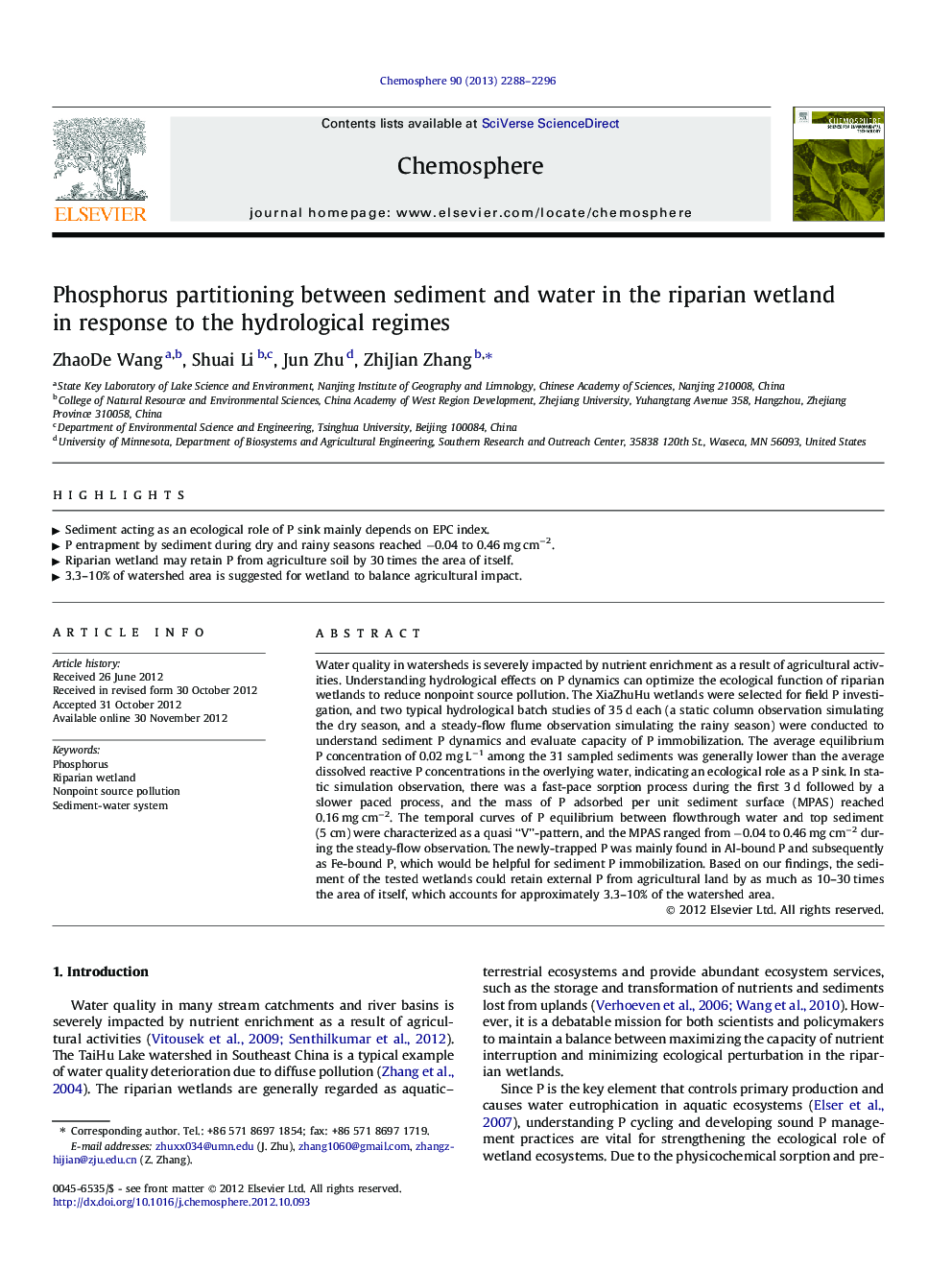| کد مقاله | کد نشریه | سال انتشار | مقاله انگلیسی | نسخه تمام متن |
|---|---|---|---|---|
| 4409684 | 1307500 | 2013 | 9 صفحه PDF | دانلود رایگان |

Water quality in watersheds is severely impacted by nutrient enrichment as a result of agricultural activities. Understanding hydrological effects on P dynamics can optimize the ecological function of riparian wetlands to reduce nonpoint source pollution. The XiaZhuHu wetlands were selected for field P investigation, and two typical hydrological batch studies of 35 d each (a static column observation simulating the dry season, and a steady-flow flume observation simulating the rainy season) were conducted to understand sediment P dynamics and evaluate capacity of P immobilization. The average equilibrium P concentration of 0.02 mg L−1 among the 31 sampled sediments was generally lower than the average dissolved reactive P concentrations in the overlying water, indicating an ecological role as a P sink. In static simulation observation, there was a fast-pace sorption process during the first 3 d followed by a slower paced process, and the mass of P adsorbed per unit sediment surface (MPAS) reached 0.16 mg cm−2. The temporal curves of P equilibrium between flowthrough water and top sediment (5 cm) were characterized as a quasi “V”-pattern, and the MPAS ranged from −0.04 to 0.46 mg cm−2 during the steady-flow observation. The newly-trapped P was mainly found in Al-bound P and subsequently as Fe-bound P, which would be helpful for sediment P immobilization. Based on our findings, the sediment of the tested wetlands could retain external P from agricultural land by as much as 10–30 times the area of itself, which accounts for approximately 3.3–10% of the watershed area.
► Sediment acting as an ecological role of P sink mainly depends on EPC index.
► P entrapment by sediment during dry and rainy seasons reached −0.04 to 0.46 mg cm−2.
► Riparian wetland may retain P from agriculture soil by 30 times the area of itself.
► 3.3–10% of watershed area is suggested for wetland to balance agricultural impact.
Journal: Chemosphere - Volume 90, Issue 8, February 2013, Pages 2288–2296